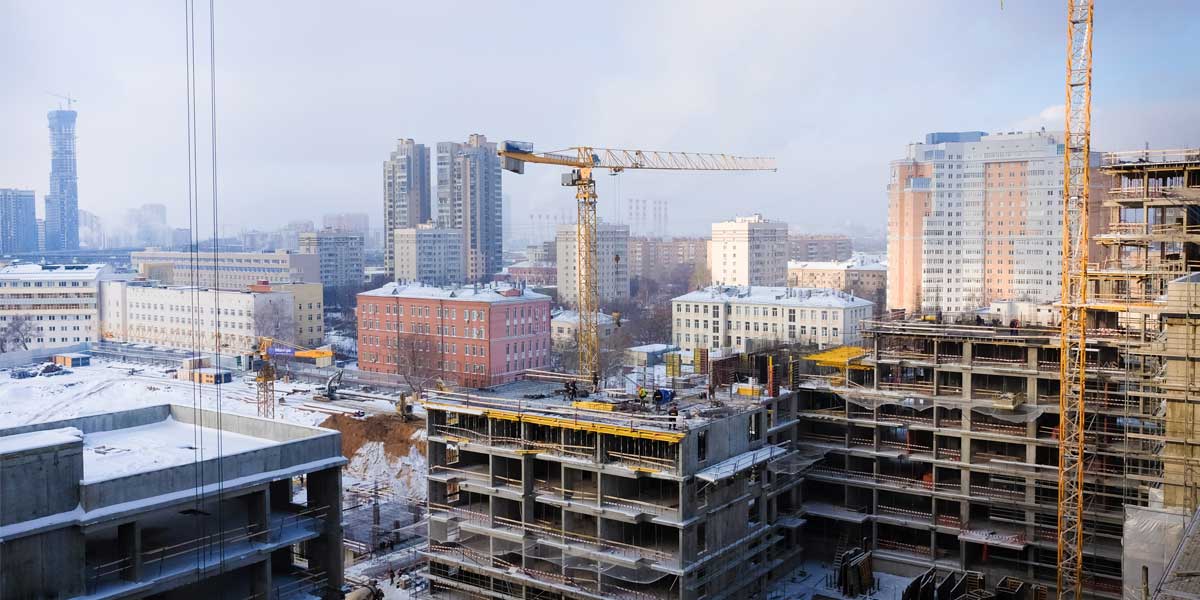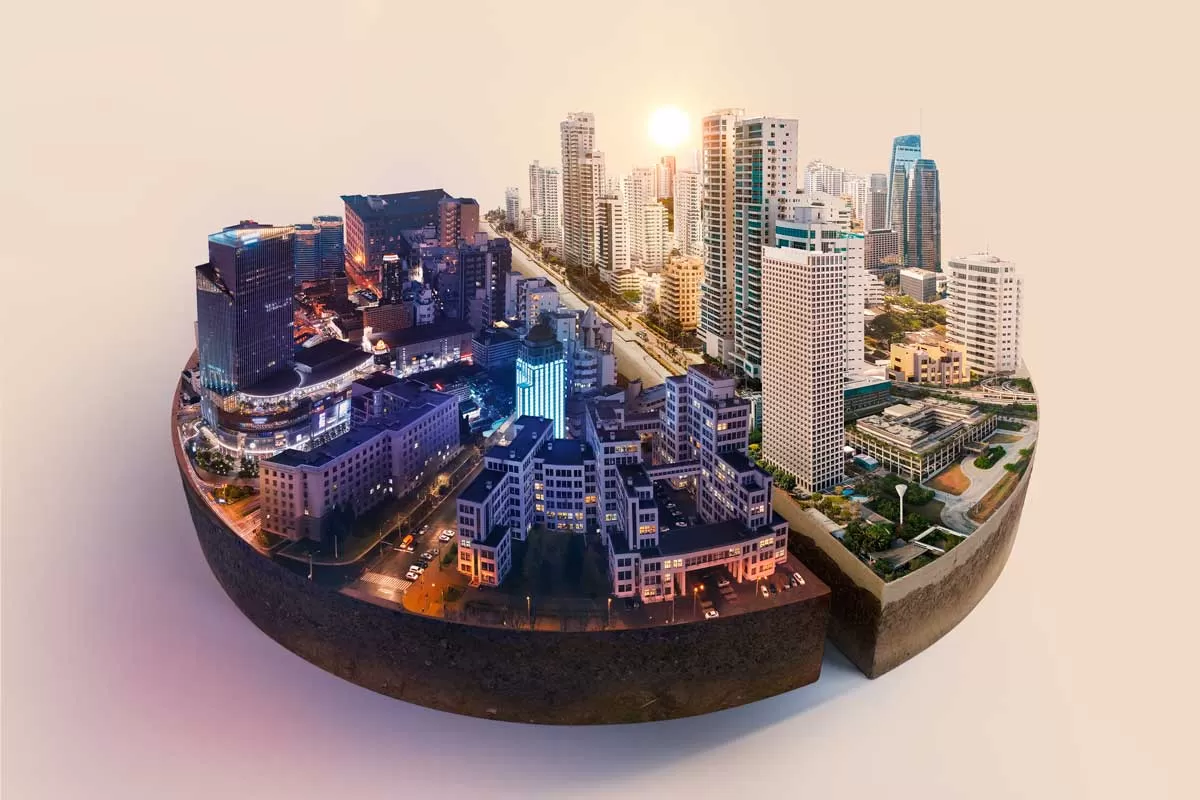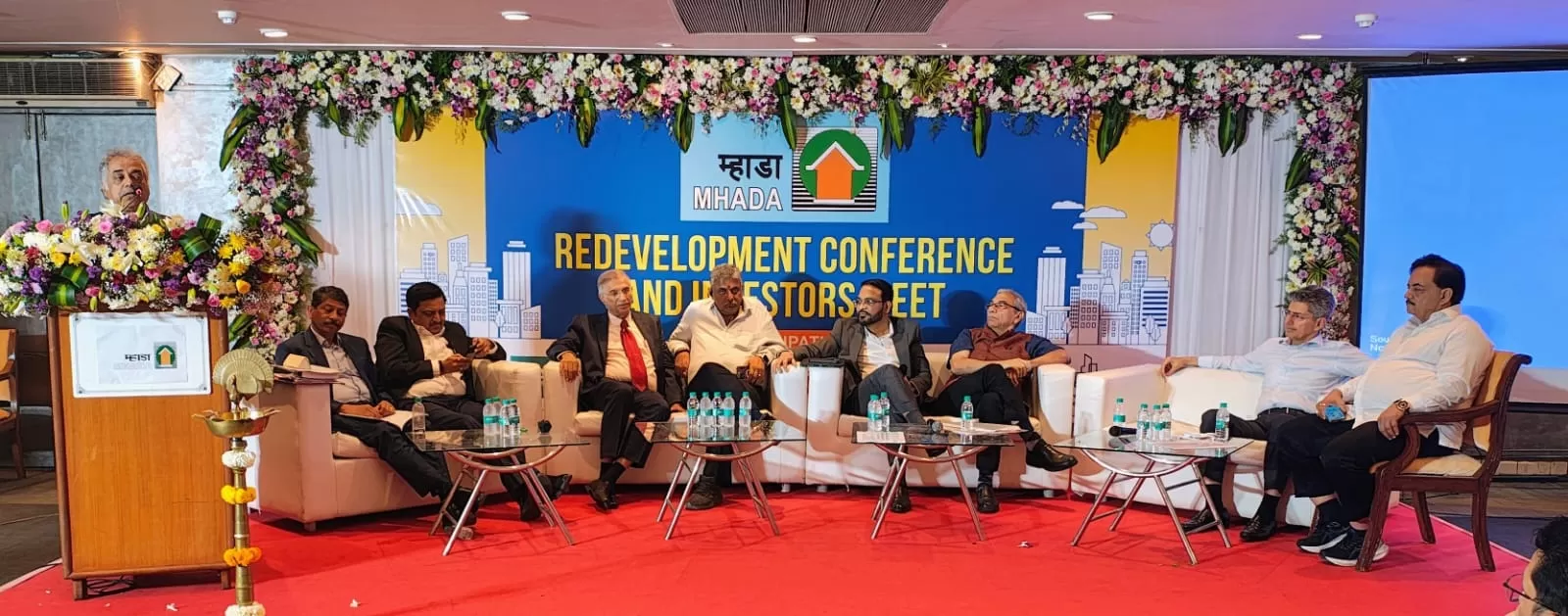Roads
What good has happened?
Three key policy initiatives taken by the Central Government to boost infrastructure investment, development and management across sectors and geographies on an unprecedented scale are the National Infrastructure Pipeline (NIP), the National Monetisation Pipeline (NMP) and the PM Gati Shakti National Master Plan, observes Yogesh Kumar Jain, Managing Director, PNC Infratech. “To support these initiatives, this March, through an act of Parliament, the Government established the National Bank for Financing Infrastructure and Development to support the development of long-term, non-recourse infrastructure financing. Monetising the Government’s operational assets is also expected to yield substantial revenues for the development of new and existing public infrastructure.”
What more needs to be done?
As both the Central Government and the states don’t have unlimited financial resources to fully realise these plans, active participation by the private sector in investment, development, construction, operation and management is imperative, continues Jain. “But to infuse confidence and trust in the private sector, a robust, balanced and mutually beneficial PPP framework is a prerequisite. If any provisions, regulations or policies need to be tweaked for such a framework mechanism to be introduced, it must be done. Timely, just and judicious decisions and actions by government authorities and proponents, throughout the lifecycle of infrastructure assets, are crucial to achieve the intended goals.”
Developments to look forward to
As the roads and highways sector is expected to continue to perform well in coming years, we look forward to seizing opportunities across the spectrum of implementation formats including EPC, hybrid annuity, BOT and OMT-modelled projects, says Jain. “We expect many expressway and national highway opportunities to come up in both greenfield and brownfield categories. We implicitly believe that technology and digitisation, including artificial intelligence, will play an indispensable role across project implementation stages, including studies, planning, design, execution, monitoring, testing, commissioning, operation and management.”
Rail
What good has happened?
The last Union Budget not only recognised the need for a robust and modern railway network but also took steps towards the modernisation and expansion of the existing network, notes Premjit Singh, Executive Vice President & SBU Head – Transportation, Tata Projects. “This included the creation of dedicated freight corridors nationwide.”
“The recent Gati Shakti is also an immense productivity-enhancing initiative for the infrastructure sector,” adds Singh. “The multiplicity of approvals and delayed clearances, that were among the biggest bottlenecks, will be solved. Gati Shakti will lead to faster project execution and reduce cost overruns. Also, the Government has expressed its intent to enhance revenues by monetising dedicated freight corridor assets for operations and maintenance, post completion.”
What more needs to be done?
Notwithstanding the proposed projects, much more investment is needed and private participation will be required, both in terms of funding and expertise, says Singh. “Indian Railways urgently needs augmentation and upgradation, both in terms of passenger and freight capacity. The Government’s Make in India initiative requires a reduction in logistics costs.”
Developments to look forward to
Indian Railways aims to develop around 500 new multimodal cargo terminals under the recent Gati Shakti initiative at an investment of approximately Rs 50,000 crore over the next five years, observes Singh. “We understand the importance of the railways, and especially the dedicated freight corridors, as we are executing multiple stretches, including an important Vadodara-Surat section of the Western Dedicated Freight Corridor. Each corridor of the dedicated freight corridor is expected to replace nearly 4 lakh trucks and, thereby, be eco-friendly. We will continue to spearhead the construction and electrification of railway lines and dedicated freight corridors across India.”
“With the widespread adoption of metro rail across cities, there is a need to connect these metropolises with nearby suburban clusters,” adds S V Desai, Whole Time Director & Senior Executive Vice President (Civil Infrastructure), Larsen & Toubro. “Integrated multimodal transport systems spur balanced and sustainable growth. The regional rapid transit system (semi high-speed rail) is a new dedicated, high-speed, high-capacity comfortable commuter service connecting regional nodes. In the NCR, eight corridors are planned; three corridors (349 km) are on priority and one corridor (Delhi-Ghaziabad-Meerut; 82 km) is under implementation. The most significant rail project underway is the 508-km Mumbai-Ahmedabad high-speed rail corridor, of which L&T is constructing 63 per cent. We expect this project to hugely boost similar projects to connect other major economic centres in the country.”
Metro rail
What good has happened?
“Metro-rail systems have emerged as the country’s most successful transport models with nearly 740 km of metro rail under operation and 32 metro projects under execution, at present,” says S V Desai, Whole Time Director & Senior Executive Vice President (Civil Infrastructure), Larsen & Toubro. “Recognising metros as a sustainable, economic and comfortable transport system to address India’s burgeoning population, increased vehicular transport and rising environmental pollution, the Government is keen to increase the penetration of metros. A hefty allocation of Rs 23,500 crore towards mass rapid transit systems and metro-rail systems in this year’s Budget aims to introduce metros in almost every city with a population of over 20 lakh. A National Urban Rail Transit Authority is also being set up to lay donor technical standards and advise the Government on metro rail-related issues.”
Frontier technologies and digitalisation are driving speedy metro construction, continues Desai. “Some large ongoing metro projects include the Chennai Metro Rail Phase 2 (118.9 km at an investment of ₹ 63,246 crore); the Bangalore Metro Project Phases 2A and 2B (58.19 km costing Rs.14,788 crore); Kochi Metro Railway Phase 2 (11.5 km at a cost of ₹1,957.05 crore); the Nagpur Metro Phase 2 and the Nashik Metro (requiring outlays of Rs.6,708 crore and ₹ 2,092 crore respectively). L&T is presently constructing 18 projects across various cities, cumulatively worth approximately Rs 50,000 crore.”
Developments to look forward to
Metro rail systems have seen and will continue to clock significant growth, says Desai. “Shifting focus to Tier 2 cities, metro rail construction has kicked off in cities like Surat, Indore, Kanpur, Bhopal, Patna, etc. while two innovative transport systems—MetroLite and MetroNeo—are also in line to provide a metro rail network at a much lesser cost in Tier 2 cities and in the peripheral areas of Tier 1 cities. With government support, adequate funding and the increasing adoption of digitalisation, the sector is all set to describe an extremely steep growth curve.”
Ports
What good has happened?
The Ministry of Ports, Shipping and Waterways has undertaken measures to boost the sector and the economy, lower the cost of logistics and improve the country’s competitiveness in the global market, observes Rajiv Agarwal, Operating Partner, Infrastructure-Essar, and Managing Director, Essar Ports. “Key initiatives include bringing projects up for competitive bidding during the past year and developing a pipeline of projects for bidding, paving the way for mechanisation and efficiency. The Government is focusing on port connectivity projects under Sagarmala. The Major Ports Act 2021 will enable private players to fix tariffs based on market conditions, boosting fresh investments and growth. Gati Shakti will pave the way for holistic development across different ministries, easing coordination and ensuring effective implementation. The launch of the Maritime Vision 2030 will pave the way for global maritime leadership. The NIP and NMP will enable the infrastructure support required for Atmanirbhar Bharat.”
What more needs to be done?
Private terminals are looking at tariff flexibility for old concessions in major ports (under different tariff regimes) to put them on an equal footing with new concessions in major and non-major ports, says Agarwal. “Port project finance needs more government support as banks are averse to supporting new investment in ports.”
Agarwal wants the government to promote and empower infrastructure finance companies to fund port projects. Also, mechanisms to enable flexibility in long-term concessions to ride out evolving market dynamics and other risks impacting projects and operations.
Developments to look forward to
“At Essar, we are investing in infrastructure and resources to stay future-ready, to ensure the visibility of cargo, to handle cargo in the most efficient and environment-friendly manner and to speed up the turnaround of bigger vessels, to lower the logistics cost, continues Agarwal. “With over 50 years of experience, being pioneers in the art of end-to-end supply chain management offering total logistics solutions, we will continue to expand in the existing line of business and develop new assets. We aspire to continue to deliver state-of-the-art solutions with a sustainable advantage to our customers. Diversification through service offerings, customer mix and cargo will play a pivotal role.”
Airports
What good has happened?
The Government has signalled its intent to continue on the path of airport disinvestment and concession of several brownfield Indian airports in the next three years, says Debayan Sen, India Director, Landrum and Brown. “Coupled with the development of second airports in Tier-I cities to decongest primary airports, this is expected to attract upwards of $ 10 billion of investment over the next decade. Attracting this investment by tapping into private-sector efficiencies is the right way forward. Airports are public assets that need to create value for all stakeholders involved through long-term airport concessions.”
“The Development Finance Institution announced in the Budget is expected to be operational and would provide liquidity and mitigate the risk for institutional lenders,” he continues. “The Government’s attempt to level the playing field for aircraft leasing companies in GIFT city will have a positive impact on the overall aviation ecosystem and drive growth in the maintenance, repair and operations business.”
What more needs to be done?
Some challenges remain, which directly impact the bottomline of aviation entities, says Sen. “Bringing aviation turbine fuel under the ambit of GST at a reasonable rate would be a gamechanger. The rationalisation of GST rates for aviation goods and services, such as ticket sales, catering and cargo, will incentivise investment and allow aviation companies to pass on the benefit to the end-user. Construction activities attract 18 per cent GST, which has increased the overall development cost.”
The leasing of the first aircraft through GIFT City has had some initial teething issues, he continues. “Further clarity on customs duty, import procedures and parking is required. Several global players are waiting on the fence for the process to be streamlined.”
Developments to look forward to
EPC work on the second airports in Mumbai and Delhi is expected to begin in FY 2022 providing a slew of opportunities for suppliers of services (detailed design, construction management, specialised facility design) and technology products likely to be needed to optimise facility use, Sen points out. “The focus will be on innovative technologies that could boost operational and sustainable efficiency.”
The next wave of the asset monetisation plan in FY 2022 is expected to include six bundles—one larger airport with one to two smaller airports in each, continues Sen. “Some larger regional airports such as Indore, Bhubaneshwar and Amritsar are on the list. This is expected to attract $ 600-800 million in private capital. Debt and equity investments in the leasing space will also grow with the streamlining of the process and clarity on pending issues.”
Power
What good has happened?
The best thing to have happened in the energy sector in 2021 was the realisation that coal cannot be written off, says Anil Kumar Jha, Chairman, Jindal Power. “Consider the fact that India has very limited known resources of natural gas and petroleum products. It imports almost 85 per cent of its requirement, making petroleum products India’s topmost import worth around Rs 700,000 crore. At present, coal supplies cater to around 72 per cent of electricity in the country. The rest comes from renewable energy sources, nuclear and hydropower.”
In October 2021, we heard the country would be plunged into darkness because of insufficient coal supply, he continues. “But the situation was in control in 10-15 days when Coal India supplied a major portion of the required coal with the help of the Power Ministry and the Railway Ministry.”
So, Jha summarises, “If India is to achieve energy security, there is no alternative but to depend on renewable energy and coal for the next 20-30 years unless we find a viable substitute. King coal is here to stay. In this context, the Government has taken a corrective step. Previously, coal blocks coming up for auction were only allocated for captive use but now the Government has permitted these blocks to be auctioned for commercial use.”
What more needs to be done?
India has 320 billion tonne of coal reserves, enough to last over 100 years.
Last year, India produced around 730 mt of coal, and consumed around 965 mt of coal. The balance was met through imports—185 mt of power grade coal and coking coal, worth about Rs 140,000 lakh crore. This isn’t right. India should be self-dependent.
Coal India produces around 82 per cent of the total production. But the country shouldn’t be dependent on one company to meet its needs. Thus, commercial mining must be fast-tracked. With commercial mining, the coal demand-supply gap can be bridged within three to five years. About 100 mt of (presently imported) coal can be substituted. Only a few power plants situated near coastal areas will continue to import coal.
Also, some concern should be shown for the coal industry. Coal prices haven’t risen in the past four years whereas input costs have increased significantly. Prices should be increased based on the pricing index. If India has to produce 1 billion tonne of coal by Coal India alone by 2024, then Coal India will need to incur a lot of capital expenditure. But that will only be possible if their dues are paid on time. At present, Coal India has over Rs 15,000-20,000 crore due to it from the Centre and state generation companies.
Coal by itself isn’t polluting. Using coal is polluting. Technologies exist whereby the use of coal can be made more environment-friendly but these cost money. Those using coal are responsible for spending on these green technologies. The Government should incentivise the use of clean coal technology.
The power sector must be sympathetic to the coal sector to provide the necessary quality and quantity of coal to it. The October crisis mainly happened because the power sector didn’t pick up stock from Coal India, compelling the company to keep 100 mt inventory, or two months production, which is unheard of.
Real estate
What good has happened?
With India’s urban population expected to reach about 81 crore by 2050, the Central Government acknowledges the importance of housing and has launched a massive campaign that promises ‘Housing for All’, observes Taha Ansari, Managing Director, Project Management, North India at Colliers. “This will require more than 10 crore houses costing over $ 2 trillion in the next two to three years.”
Other policies boosting demand for housing are low interest rates, the lowering of minimum application fees from SEBI for REITs, extending the tax holiday for affordable housing projects till the end of FY22, Atmanirbhar Bharat 3.0 package, and the new Model Rent Act, adds Ansari. “Promoting REITs will allow investments in real estate.”
Reducing stamp duty had proven successful for the luxury housing market in Mumbai last year, observes Reeza Sebastian, President, Residential Business, Embassy Group. “Following the Maharashtra government, the Karnataka government reduced the stamp duty from 5 per cent to 3 per cent in the affordable housing segment earlier this year. This helped boost buyer sentiment as well as sales. Additionally, the Benami Transactions (Prohibition) Amendment Act, 2016, helped establish a regulatory mechanism to deal with disputes arising from ‘benami’ transactions, levying penalties to increase institution-investor participation and regulating the sector to make the country an attractive investment destination. Also, several major banks and mortgage and housing finance companies have significantly reduced interest rates (as low as 6.5 per cent) during the festive season to revive housing demand.”
What more needs to be done?
“Growth in the development of urban housing will need the Centre and states to work cohesively, with a greater focus on improving urban infrastructure such as sewage and waste disposal, transportation, green power and water supply,” shares Ansari. “The master planning of cities should integrate with spatial planning to improve growth. Single-window approval for new projects is desirable. More tax rebates in affordable real estate would minimise the effect of rising construction costs. Reviewing FAR/parking norms, ground coverage and low-density norms would boost the delivery of affordable housing.”
For his part, Sebastian lists several desirables:
House sales saw a sharp decline of 42 per cent after the stamp duty cut was roll-backed. Restoring this cut would help catalyse sales. State governments should consider reducing stamp duty across all housing segments, especially for women.
With NBFCs still in the throes of a liquidity crunch, to help cash-strapped developers to access working capital, the Government can devise schemes like SWAMIH, which earmarked Rs 25,000 crore to aid the completion of stressed and stalled projects.
Though the Government had reduced GST rates on housing in 2019, they need to be rationalised further and made uniform across all projects.
Resuming the subvention scheme, especially for projects nearing completion or in their last mile of development, will encourage home buyers by easing financial planning and improving cash flows for developers.
More land parcels including peripheral land need to be released to meet the country’s burgeoning housing needs.
More incentives and monetary benefits can be offered to builders engaged in R&D in new building materials and technologies, to deliver low-cost, affordable and environment-friendly housing, with a focus on the integration of land and the transport network.
A single-window computerised clearance system could substantially reduce the manual intervention and stages (currently 35) required to approve a housing project, and decentralise government decision-making.
The price cap for affordable housing (currently Rs 45 lakh) should be increased. Awarding industry status to the entire real-estate sector would allow developers to access funds at an affordable rate of interest. Rental allowances should be increased, as should direct and indirect tax benefits.
Developments to look forward to
Demand for luxury homes was expected to grow over 70 per cent in 2021, spurred primarily by UHNIs and HNI buyers, notes Sebastian. “Work from home has increased the demand for larger homes. Close to 75 per cent of NRIs look for three and four-BHK homes. Bengaluru and Pune contribute 35 per cent to luxury homes sales. Millennials are increasingly interested in this aspirational segment. By 2025, 45 per cent of luxury homeowners will be millennials. Consumers are also demonstrating a preference for well-known developers offering serviced and managed residences. We anticipate a rise in demand for peripheries and suburbs with expansive plotted developments and luxury villas, and ready-to-move-in homes and integrated townships. The premium and mid-housing segment characterised by tech-enabled or smart homes remains buoyant. Demand for fully serviced senior living homes has increased substantially after the pandemic.


















